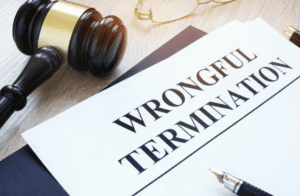
Over the next four blogs, we will provide an overview of the key elements of the EEOC’s recently released Enforcement Guidance on Retaliation and Related Issues. Today, we begin with an overview of retaliation and an explanation of the EEOC’s suggested “protected practices.”
Retaliation in the workplace is widespread and forms the most frequently cited basis for complaints filed with the Equal Employment Opportunity Commission (EEOC). Almost 45% of all complaints formally submitted to the EEOC contain a claim of retaliation.
Given the frequency with which employees allege retaliation, along with a string of recent court cases discussing the retaliation cause of action, the EEOC has issued an updated Enforcement Guidance to help interested parties, such as employers, understand how the EEOC will enforce federal law concerning retaliation.
Even though it does not technically have the force of law, the EEOC’s Enforcement Guidance provides a good way of predicting how the EEOC will decide a retaliation case. Additionally, courts will turn to the EEOC’s Enforcement Guidance to help decide a particularly complicated legal issue.
Table of Contents
ToggleBackground: What Is Retaliation?
Retaliation is any materially adverse action that an employer takes against an employee because the employee engaged in a protected activity. A protected activity is a legally protected right to do something, such as discuss labor conditions or request protected medical leave.
Many federal discrimination laws have provisions that prohibit employers from retaliating against an employee because he or she complained about or asserted a claim of discrimination. Here are a few of these laws:
- Title VII of the Civil Rights Act of 1964,
- the Age Discrimination in Employment Act,
- the Americans With Disabilities Act of 1990,
- the Equal Pay Act of 1963, and
- the Genetic information Nondiscrimination Act of 2008.
Protection from retaliation is very important, because the enforcement of these laws depends on individuals being willing to take necessary legal action. Without prohibitions on retaliation, individuals will be less inclined to step forward and file a discrimination complaint, knowing they could easily get fired or be blackballed by their employer with no legal recourse.
For an overview of retaliation, please read the retaliation practice areas section of our website. For more detailed information, check out some of our earlier blog posts, such as “Is Retaliation for Taking Medical Leave Illegal?” and “5 Examples of Retaliation in the Workplace.”
EEOC Enforcement Guidance on Retaliation and Related Issues
Despite the importance of antiretaliation law, the last update to the EEOC’s Enforcement Guidance was in 1998. However, on August 25, 2016, the EEOC published its EEOC Enforcement Guidance on Retaliation and Related Issues Notice, which clarified the EEOC’s position on retaliation and its interpretation of relevant law.
The Enforcement Guidance is extensive and detailed, so we will not cover all of it here. Some of the highlights include the following:
- broadening the definitions of what constitutes a protected activity,
- expanding what it means for an employer to take a materially adverse action against an employee,
- providing examples of retaliation,
- explaining the rules against interfering with an employee’s rights under the Americans With Disabilities Act, and
- listing “promising practices” employers can follow to reduce the chances of retaliation taking place.
The last point is important and will be the focus of the rest of this blog post.
EEOC’s Promising Practices
 The EEOC’s list of promising practices consists of five main points. They are only recommendations. Therefore, compliance does not guarantee that an employer will avoid a retaliation claim, even if it implements all the practices. However, applying them can reduce the chances of retaliation occurring. The five points are as follows:
The EEOC’s list of promising practices consists of five main points. They are only recommendations. Therefore, compliance does not guarantee that an employer will avoid a retaliation claim, even if it implements all the practices. However, applying them can reduce the chances of retaliation occurring. The five points are as follows:
- Implement an easy-to-read antiretaliation policy, with examples of prohibited retaliation, explanations of the procedures for reporting retaliation, and a reminder to managers that retaliation against an employee will be subject to discipline.
- Provide adequate training to managers regarding antiretaliation policies and methods managers can use to avoid situations that might appear to be retaliation. Employees and HR staff should also be trained as to what constitutes a protected activity and what to do if an employee expresses concern about possible retaliation.
- Have a well-developed process for handling workplace complaints that may result in retaliation. Many managers who are the subject of a workplace complaint will feel falsely accused or angry, even if they did do something wrong. However, tailored support can help managers deal with these feelings and continue to conduct their job duties properly without retaliating or appearing to retaliate.
- Follow up with all parties involved in the complaint investigation and proactively ask whether there are any issues or questions regarding actual or perceived retaliation.
- Review significant employment actions that take place during the investigation of a complaint to make sure they do not constitute retaliation. For instance, if an employee who has formally alleged discrimination needs to be demoted for poor job performance, make sure that the decision is based on legitimate reasons, is backed by documentation and other supporting evidence, and is independently reviewed by in-house counsel, an HR specialist, or a designated management officer.
How the EEOC’s Promising Practices Can Help Employees
Because the primary goal of the EEOC’s promising practices is to prevent retaliation from taking place, it helps both employers and employees. However, the promising practices can help employees in a unique manner by serving as a rough road map to identify and/or establish retaliation.
One way employees can use the EEOC’s promising practices as a guide is by looking at the employer’s clearly written antiretaliation policy, assuming there is one. One of the steps to creating this type of policy is to identify and eliminate workplace rules, procedures, or policies that may deter an employee from engaging in a protected activity. For example, an employer rule prohibiting employees from voluntarily discussing their salaries among themselves can be considered retaliatory.
Another way the EEOC’s promising practices can help prove retaliation is through the recommendation that any negative action imposed against the complaining employee be properly reviewed and supported by adequate facts and reasons.
For example, let’s say you file a complaint for sexual harassment against your boss. Soon after learning about the complaint, your boss tells you that you will not be getting an end-of-year bonus, even though you have gotten the bonus for the last 12 years and your job performance was stellar this year.
It would be quite a coincidence for your boss’s decision about your bonus to have nothing to do with your sexual harassment complaint. One way to confirm whether it is a coincidence is to check the underlying reasoning your boss had for denying you the bonus.
After looking at the reason for the bonus denial, if all you find is a vague explanation with no factual basis and learn your boss’s decision was not reviewed by HR or an attorney, then that might be evidence that retaliation might have taken place.
Summing It Up
Retaliation occurs when an employer takes a materially adverse action against an employee in response to the employee partaking in a protected activity.
Many federal antidiscrimination laws also have antiretaliation provisions to protect individuals who initiate a complaint against an employer.
The EEOC sometimes issues enforcement guidelines to help explain how the EEOC will interpret and enforce applicable employment laws.
On August 25, 2016, the EEOC issued its Enforcement Guidance on Retaliation and Related Issues, which replaces its prior Enforcement Guidance from 1998.
The EEOC’s Enforcement Guidance is intended to do five things:
- broaden the definitions of what constitutes a protected activity,
- expand what it means for an employer to take a materially adverse action against an employee,
- provide examples of prohibited retaliation,
- explain the rules against interfering with an employee’s rights under the Americans With Disabilities Act, and
- set forth a list of “promising practices” employers can follow to reduce the chances of retaliation.
The EEOC’s promising practices can help employees by serving as a road map to identifying evidence of potential retaliation in the following two ways:
- Employers should implement clear and easy-to-understand antiretaliation policies, including the elimination of policies that may deter employees from engaging in protected activities. If certain policies that deter protected activities are still in force, that may be evidence of retaliation.
- If an adverse employment action suspiciously takes place after an employee files a complaint, retaliation might be the cause if the action was not reviewed by a qualified person and/or is not supported by well-grounded facts and explanations.





